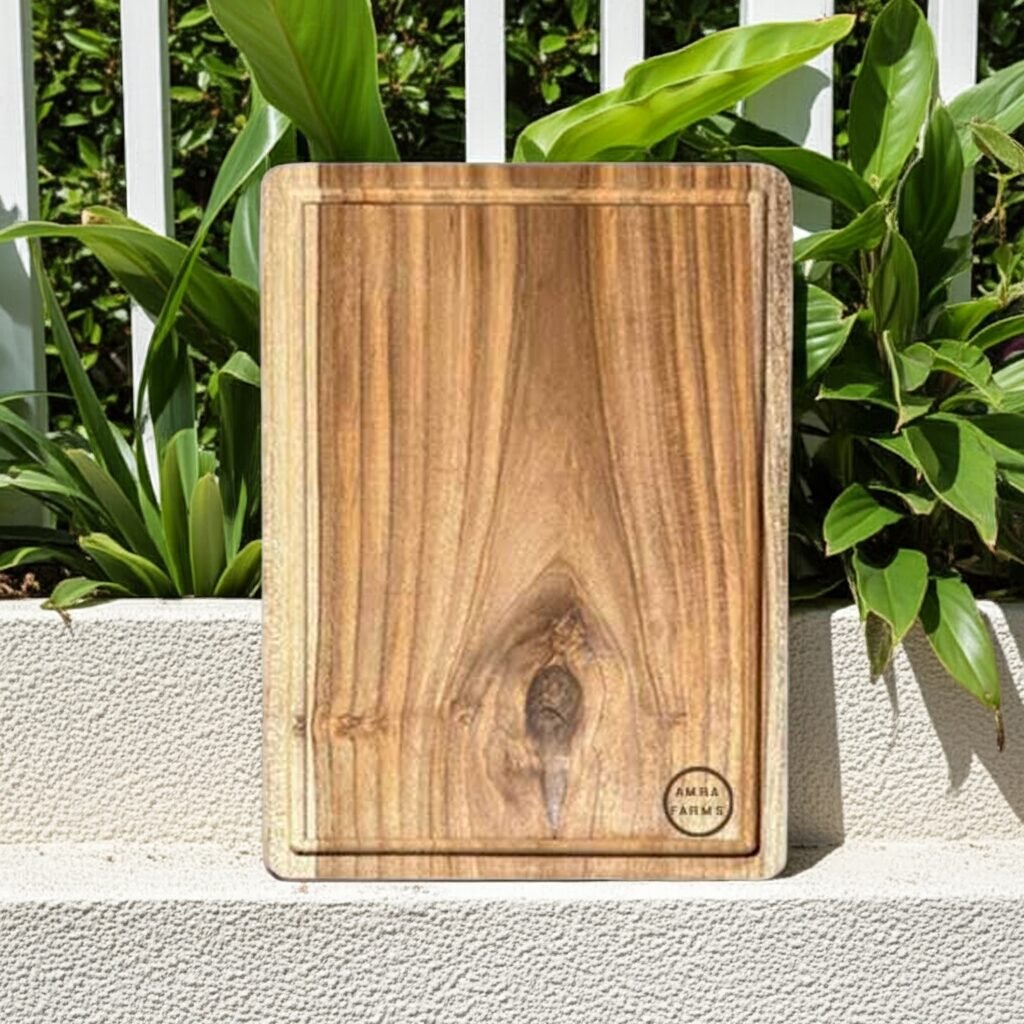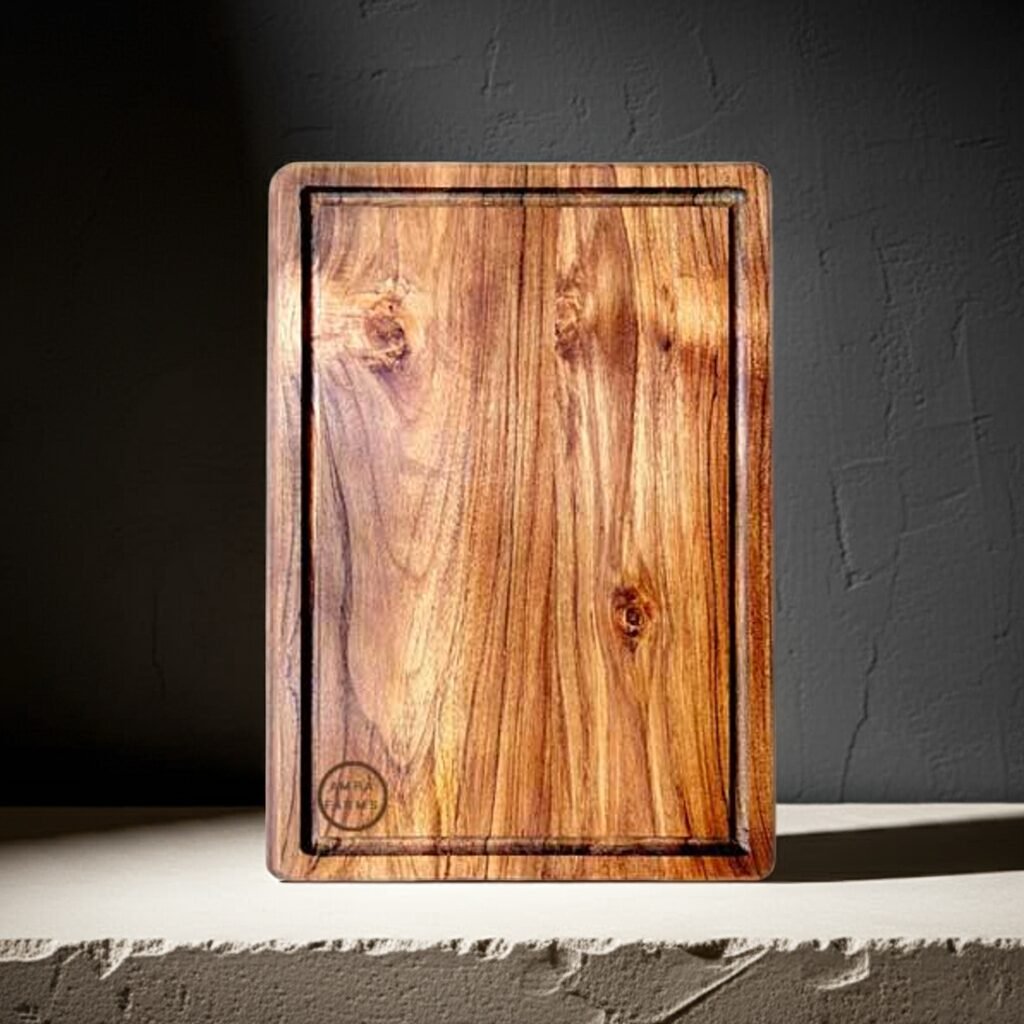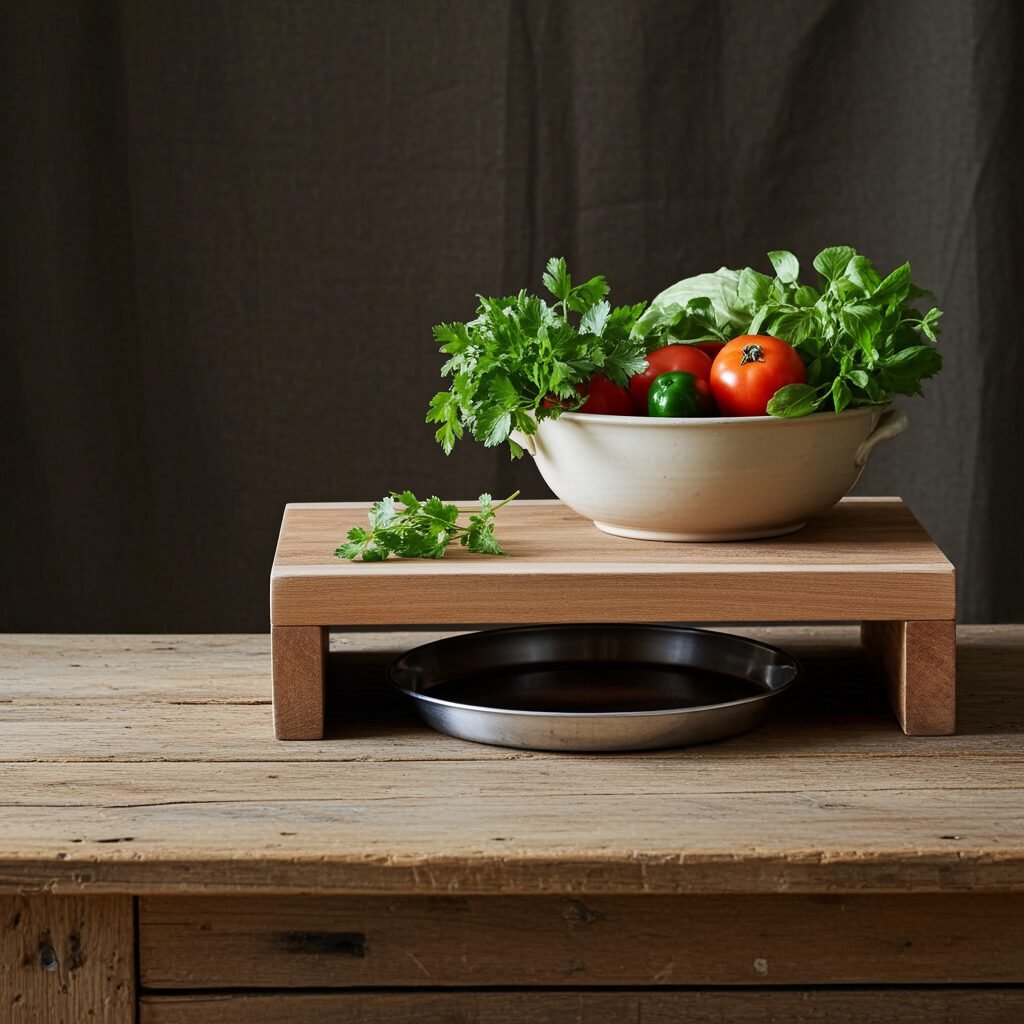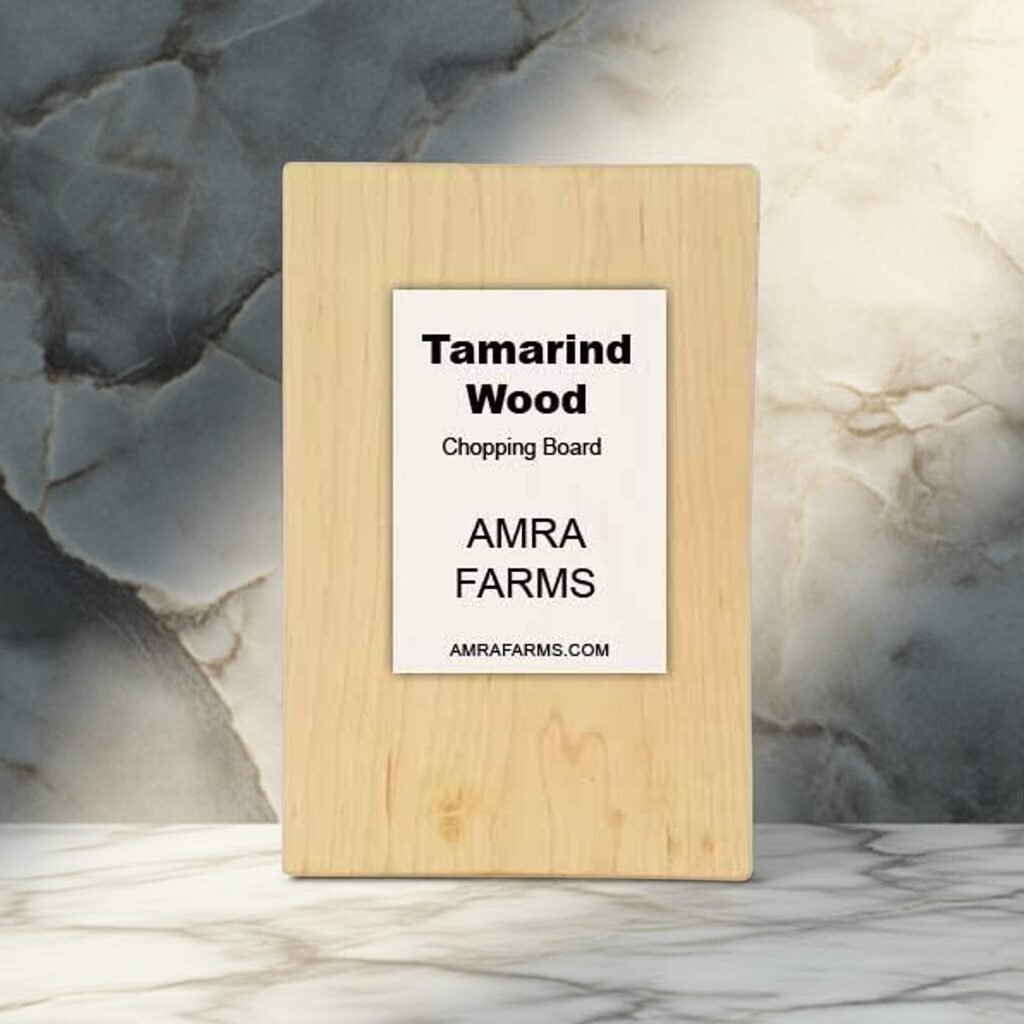Your cart is currently empty!
Walnut vs Maple vs Teak Wood Cutting Boards: Durability, Maintenance, Cost & Lifespan Compared
Indian woods are versatile for chopping boards. But the trend and beauty of imported wood is catching up fast. Wood like maple and walnut are imported from China and western countries. They are widely available in other parts of the world and they are beautiful wood. Comparing them to Indian woods like teak is important, specially when purchasing a wooden chopping board. Are you paying higher price for imported products? Are they better than native wood like teak, tamarind and mango? This article compares walnut, maple and teak wood. Teak is considered universally superior but walnut and maple wood are widely used and is being imported lately, specially chopping boards made from walnut and maple. Let’s compare these 3 woods, and the chopping boards made from these woods in detail.






Durability and moisture resistance – Teak Wood Wins
Teak is highly durable, water resistant and rich in mineral oils. The high oil content in teak wood makes it resistant to warping, cracking and bacterial growth. The oil content also helps resist moisture, a very important consideration for moisture heavy environment and exposure to moisture. They require less maintenance and make it one of the best material for cutting boards.
Walnut is durable but not as moisture resistant as teak. They require frequent oiling and care to prevent water damage. Exposure to moisture frequently will make the board dry and is prone to cracking over time if not oiled frequently.
Maple is excellent in terms of durability and the dense cell grain resists bacteria very well. They are not as water resistant as teak but better than walnut, specially aged, hard maple. Maple is a light wood and is prone to stains which are easily shown on the lighter surface.
| Feature | Maple | Walnut | Teak |
|---|---|---|---|
| Janka Hardness | 1,450 lbf | 1,010 lbf | 1,070 lbf |
| Knife Friendliness | Excellent (best for blades) | Very good (softest) | Good (slight dulling) |
| Grain Structure | Closed, tight grain | Softer, more porous | Oiled, dense with silica |
| Impact on Knife Edges | Low dulling | Minimal dulling | Slightly higher dulling |
| Maintenance | Regular oiling | Frequent oiling | Less frequent oiling |
Knife friendliness – Walnut Wins
One of the key consideration when choosing a chopping board is knife friendliness. A good board should be knife friendly and should not dull your knives. Knives are expensive tools in most kitchens and replacing them often is cumbersome and expensive. Each wood plays differently when it comes to knife friendliness.
Teak wood chopping boards : Teak is high in silica when compared to maple and walnut. Though the high silica content makes the board scratch resistant, it is known to dull knives relatively faster. To counter this effect, use an end grain cutting board made from teak, to get the best of teak wood features without dulling your knives.
Walnut: Walnut is softer than teak and makes it a gentler choice for knife edges. Ideal for preserving expensive boards, a walnut board of edge grain construction is relatively less knife dulling than teak wood edge grain boards.
Maple: Maple is harder than walnut and slightly tougher on knives. They are a popular choice among professional cooks as they balance water resistance and blade protection. Maple is more commonly used than walnut in most western kitchens due to its affordability and tough nature.
Maintenance and care – Teak Wood Excels
Teak wood is known to require the least maintenance among all three woods. They require less frequent conditioning as they are rich in natural oils and is ideal for busy households. They are also moisture resistant making it mold and fungus resistant and a good option for boards that are not used often.
Walnut is a dry wood and requires regular oiling. It is best suited for owners willing to care for their board. Extra care and consistency is key to maintaining a walnut board.
Maple requires routine maintenance too, and is known to dry fast. But requires lesser maintenance compared to walnut. Oiling the board once in two weeks is recommended. Also maple is a lighter wood and requires good care to retain its color and prevent stains.
Aesthetic appeal – Walnut Leads
Walnut is prized for its rich dark tones and elegant grains. It does look luxurious and is a beautiful wood. For many, walnut is a unique wood which appeals to their taste. The dark tones go well with most homes and kitchens. Also you don’t see a lot of stains on a dark surface making it a perfect material for cutting boards.
Teak on the other hand is warm and has a golden brown hue with striking grain patterns. It’s a tropical beauty which darkens over time. As the wood ages, the golden brown color turns dark brown with prominent grains.
Maple is pale and neutral in color with subtle grains. It’s perfect for various kitchen styles but is prone to stains. Maintaining a maple board requires time and effort, and often resurfacing.
Cost – Teak , cheaper option in India
Simply put, walnut is the most expensive material among the 3 wood. Not just in India but worldwide. Walnut boards are higher in price due to its luxurious looks.
Teak is a close competition to walnut but usually more affordable depending on its grade. Grade A teak could be more expensive than grade B and grade C teak. Grading varies based on the age of the wood, source and the percentage of sapwood in each wood. A good teak wood, which is grade A could cost almost the same as walnut boards of the same size.
Maple: Maple is the most affordable and budget friendly wood. In India, you could compare maple to tamarind wood in terms of aesthetics and price. The only difference being, tamarind wood is more dense and durable than maple.
| Feature | Teak | Walnut | Maple |
|---|---|---|---|
| Durability | Excellent, water-resistant | Good, needs maintenance | Excellent, dense grain |
| Moisture Resistance | High (natural oils) | Moderate | Moderate |
| Knife Friendliness | Harder, may dull knives faster | Softer, very knife-friendly | Medium hardness |
| Maintenance | Low, occasional oiling | Moderate, regular oiling | Moderate |
| Aesthetics | Golden brown, striking grain | Dark, luxurious grain pattern | Light, neutral, stains easily |
| Cost | Premium | Highest | Most affordable |
Lifespan comparison of Maple, Teak and Walnut wood chopping boards
Teak wood is generally expensive and more affordable than walnut. The natural oil content in teak and low maintenance makes teak more cost effective over time despite its higher upfront cost. They are priced higher than maple but lower than walnut at a comparable size. When it comes to durability, teak is extremely durable, naturally resistant to rot and moisture. They are mold resistant and resistant to insect damage due to its natural oils. High quality teak boards can last several decades, often up to 30–40 years with proper maintenance and care. With occasional refinishing and waxing your board is set to last at least 40 years.
Walnut boards are among the most expensive boards due to its rich appearance and demand. They command a premium price and cost the highest among maple, teak and walnut when compared. When it comes to lifespan, walnut falls short when compared to teak. They require regular oiling and you can expect it to last 15 years with good maintenance.
Maple is an affordable budget friendly option that is widely available. It’s sustainable and lower in cost when compared to walnut and teak. They last decades with good care. While not as long lasting as teak, a routine sanding and oiling will ensure your board remains functional for up to 20 years plus.
Lifespan with minimal and heavy usage
Your board’s lifespan is dependent on the usage and maintenance of your board. A well maintained board will last a lot longer than that which is not well maintained. A board which is heavily used will surely see a lesser lifespan. When compared, teak wood board will last 40+ years with regular use while it may last 20+ years with heavy usage. Walnut boards will last 10 years with heavy usage and 15 years with normal use. Maple wood surprisingly lasts 20+ years with regular use and up to 15 years with heavy use.
When compared cost with lifespan, teak offers more value than maple and walnut. For a board which costs lower than walnut, the lifespan of the teak board is very high. As for maple wood, the required maintenance of the board is much higher than teak, making teak a more affordable option which is less prone to damage.
Typical price range for teak, walnut and maple boards
| Feature | Teak | Walnut | Maple |
|---|---|---|---|
| Typical Cost | High, moderate compared to Walnut | Highest among three | Most affordable |
| Lifespan | 50-80+ years with maintenance | 15+ years with maintenance | 20+ years with maintenance |
| Maintenance | Low frequency oiling, refinishing | Regular oiling required | Moderate oiling and sanding |
| Durability | Very high, moisture and rot resistant | High durability, less moisture resistant | High durability, less resistant to moisture |
| Sustainability | Variable, often limited supply | Moderate | Good, abundant and sustainable |
Teak woods could range from anywhere between 1999 – 5000 Rs based on the type of wood and construction. Single block edge grain boards of medium size is usually between 2500 and 3500 Rs from a grade B teak wood and could cost 4000–4500 for a grade A teak wood edge grain single block wood. On the other hand, the same sized wooden board, if not single block could be as low as 1500–2000 Rs. An end grain board on the other hand could go up to 4500–6000 Rs if constructed with teak wood.
Maple wood is usually imported and the cost of imported wood is relatively higher with taxes and duties. The board constructed from maple carries forward the additional cost and yet, could be affordable between the range of 2500–3000 Rs for a basic board. Unfortunately most imported boards cost 5–6 times higher in India costing anywhere between 8000–10000 Rs after duties and tax.
Walnut boards, usually not available in single block wood are imported from China. While the cost of import and duties will remain low, the final price would be around 5000–6000 Rs for a walnut cutting board. Single block boards could cost slightly higher.
| Wood Type | Typical Price (India) | Typical Price (USD) |
|---|---|---|
| Teak | ₹2,000–₹9,500 | $60–$200 |
| Walnut | ₹1,500–₹8,250 | $70–$300 |
| Maple | ₹450–₹2,000 | $60–$200 |
Cost of refinishing wooden boards
Most boards will require a refinishing or resurfacing every year to maintain its beauty and functionality. With regular use all wooden boards will have deep knife scars which are not suitable for cutting food. A regular refinishing at least once a year will ensure your boards are in good condition. A professional service of refinishing any board ranges from 500–750 Rs. The same can be done at home with DIY kits and supplies. All you need is a sand paper, 3–4 hours of time and good muscle power. If you have a good hand tool for sanding, you would get the entire process done in 30 minutes. Regular refinishing and resurfacing your board maintains the beauty of the wood and keeps the board safe for cutting food.
Categories
Products
- Buy Wooden Vegetable Cutting Boards Online
- Wooden Kitchen Accessories Tools
- Buy Butcher Block & Meat Cutting Boards Online
- Buy Premium Edge Grain Single Block Wooden Chopping Boards Online
- Buy The Best Teak Wood Chopping Boards Online In India
- Buy Wooden Cutting Boards With Handle For Kitchen
- Mango Wood Chopping Boards
- Single Block Chopping Boards
- Tamarind Wood Chopping Boards
- Wooden Platter Boards , Pizza Platters & Charcuterie Boards
Tamarind Wood Cutting Board Teak Wood Cutting board
